Today’s digital marketing industry is valued at a whopping $601.84 billion, with an expected growth rate of 10.9%. Expert forecasts further say this growth will by no means slow down in the coming years.
With ad spend on the rise, there’s no reason why any digital marketing agency’s profit margins should look bleak.
It should no longer be a question of whether marketing is profitable but how you can increase your agency’s revenue.
So, if you’re wondering the same thing, we’ve got you.
Read on to find out how to grow your profit margins beyond 20%—because, yes, it’s possible!
Is Digital Marketing Profitable?
Digital marketing is, without a doubt, a profitable industry.
According to a Gartner survey, companies have increased marketing budgets by 9.5% in 2022.
What’s more, a 2022 survey by Deloitte found that of their total marketing budget, companies are allocating 57.1% to digital services alone.
What brought this on?
Since the pandemic, people have been spending more time online, which isn’t likely to change anytime soon.
Agencies of all types and sizes recognize a shift in people’s buying behavior–from shopping in brick-and-mortar stores to browsing on the web or social media platforms.
There is, therefore, a growing need for digital services, like social media management and SEO, to capture their target audience and expand their customer base.
This shows that marketing agencies have an incredibly massive market.
As long as you know how to position yourself, turning a profit is practically a given.
How Much Do Digital Marketing Agencies Make?
The average marketing agency revenue is $30,000 to $145,000 annually.
To put that in perspective, monthly retainers may cost around $5,000, and comprehensive multi-channel projects around $1,000 to $50,000.
These numbers vary depending on two main factors: your billing rate and utilization expenses.
How much you bill your clients will depend on:
- Your level of expertise.
- The complexity of your project/s.
- Client goals and expectations.
- Your customer base (Larger, more established companies can often be billed more).
Your utilization expenses include:
- The nature of your services.
- The size of your agency.
- Employee and contractor compensation.
- Other operational costs (such as building fees).
What is the Average Digital Marketing Agency Profit Margin?
According to a survey conducted by NYU Stern among over 5,000 firms across multiple sectors, the average profit margin is 7.77%.
Digital marketing agencies, however, can enjoy average profit margins of about 15%. Depending on their experience, expertise, and services, they may even rake in margins of 40% or higher.
If your profit margins are stuck at 15% or less, check out these programs by Prospecting On Demand, which can help entrepreneurs scale their agency to a 7-figure MRR asset!
Is Starting a Digital Marketing Agency Worth It?
Looking at it from a purely financial standpoint, starting a digital marketing agency is definitely worth it.
There are three main reasons why:
- Strong profitability: A digital marketing agency could enjoy profit margins of 40% or more, depending on the abovementioned factors. As you improve your market positioning, your profits can grow even further.
- Expansive market: There is no such thing as an industry that doesn’t need digital marketing. Everything (from healthcare services to advocacy campaigns) now needs to have an online presence to reach its intended audience.
- Potential for growth: The outlook for digital marketing looks great and shows no sign of slowing.
However, deciding whether you should start a marketing agency shouldn’t be based solely on industry averages or financial standpoints.
Some questions to ask yourself before starting one are:
- Do I have a niche or specialization that’s in demand? The market is huge, and the industry’s economic outlook is great. But you’ll also be competing with hundreds of other agencies. You need to stand out to have a bite of the market.
- Do I have a stellar team? What will set you apart from a freelancer is whether you have a team (or can build one) that can produce results and whom you trust.
Am I in it for the long haul? Starting an agency requires commitment. It also means marketing your agency (there’s a way to put your skills to use!) to gain new clients–and that takes time. Also, expect to meet roadblocks along the way!
What is a Good Profit Margin?
The average profit margin in marketing is around 10 to 15%, but high-performing agencies can reach 20% or more margins.
Note that there’s a difference between net profit margins (the amount left after subtracting all direct and indirect expenses) and gross profit margins (the amount left over after subtracting direct expenses, like contractor fees, only).
You should look at your net margins to accurately determine your agency’s financial health.
Is a 50% Profit Margin Good?
A profit margin of 50% means your business is thriving!
In other words, your agency can cover all operating expenses, invest in growth, and withstand financial downturns or shifts in industry trends.
However, it’s normal for start-ups to have a profit margin of around 10 to 20%.
Want to boost your profit margins up to 50% or higher? Prospecting On Demand can help you. Schedule a free agency assessment to learn how!
How to Calculate Marketing Agency Profit Margins
A straightforward way to calculate your agency’s net profit margin is as follows:
- Sum up your total revenue: Your total revenue includes all earnings, such as retainer and hourly fees.
- Add up your total expenses: Include all direct and indirect expenses. Direct expenses include fixed employee salaries and contractor fees, while indirect fees, such as utility bills and taxes, can be fixed or fluctuating.
- Deduct total expenses from total revenue: The resulting amount is your net profit.
- Get your net profit margin: Determine your profit margin by dividing your net profit by your total revenue. Multiply the resulting number by 100.
The formula looks like this:
((Total Revenue – Total Expenses) ÷ Total Revenue) ✕ 100 = Net Profit Margin
Take a look at this sample computation:
(($100,000 Total Revenue – $50,000 Total Expenses) ÷ $100,000 Total Revenue) ✕ 100
= 50% Net Profit Margin
What are the Most Profitable Digital Marketing Services?
The top three most profitable digital marketing services are the following:
- Inbound marketing
- Search Engine Optimization (SEO)
- Social media advertising
Inbound Marketing
Simply put, inbound marketing is a strategy that involves addressing a need or problem by presenting you as the solution.
Many times, consumers aren’t aware of a need until they come across materials that open their minds to something that may impact their lives positively.
That’s inbound marketing.
It brings your product or services front and center in your audience’s consciousness and joins them throughout their consumer journey.
One of the strongest types of inbound marketing is content development, particularly written content in the form of articles and blogs.
These are distributed across various channels and generate leads by driving organic traffic.
Search Engine Optimization (SEO)
SEO is essential to a successful inbound marketing campaign. Think of it as the vehicle that drives your content to your audience.
Your content may be great, but without a solid SEO strategy, it might as well be a bit of sand on a long stretch of beach.
Nobody is going to find it.
SEO services involve optimizing web content (doing keyword research, ensuring content matches search intent, and incorporating keywords), enhancing user experience on web pages, and building a robust website infrastructure.
These affect how well (or poorly) a page ranks on search engine results pages (SERPs).
A highly optimized website with authoritative, valuable content has a much better chance of landing on the first page of Google search results.
Social Media Management and Advertising
61.4% of the global population today is active on social media. That’s around 4.95 billion people!
There’s no denying that if you want to reach your target market, the best way is to have a strong presence on social media platforms where your market hangs out.
Social media management positions yourself so that your audience resonates with your message. It may involve either organic or paid advertising–or both.
Start-ups, in particular, do well by combining paid and organic strategies to generate traction and maintain momentum over time.
4 Strategies to Improve Profit Margins
Consider the following strategies to increase your profits, enhance efficiency, and boost your agency’s productivity.
1. Role of Value-Based Pricing
As we mentioned, one of the biggest profit drivers is your billing rate.
You can increase your revenue by establishing rates based on the value you bring to your clients instead of comparing yourself to your competitors or focusing on offering affordable rates.
That value may be measured in terms of how many leads you can generate, how much more traffic you can drive, or how many more sign-ups you can guarantee based on your expertise.
This strategy also ensures you’re not restricted by existing pricing structures or selling yourself short.
2. Accurate Time Tracking and Billing
Most traditional agencies charge clients only for billable hours or time spent on tasks directly related to a project.
For example, if you’re working on a company’s SEO campaign, your billable hours may include time spent on SEO audits and keyword research.
However, tasks indirectly related to the project, such as hiring the right contractors, team meetings, and training, are just as crucial for the project’s success.
It’s, therefore, necessary to track time spent on both direct and indirect tasks to gauge the efficiency of your project execution and bill your clients to cover non-billable hours appropriately.
3. Impact of Specialization and Niche Markets
We can’t say this enough: the digital marketing industry has many agencies offering the same services. Competition can’t be any steeper.
The best way to stand out is to find your niche.
To do so, specialize in services that you know you’re exceptionally good at or where you can offer a unique value proposition.
Companies would rather work with an agency with proven success within a specific niche than a full-service agency with a generic offering.
4. Exploring Strategic Partnerships
Marketing is all about relationships–not just between you and your clients but also between you and partners who can help propel you to success.
A strategic partnership is one where you gain additional resources, increased support, and even the opportunity to expand to new markets.
Want to see it at work? Team up with Prospecting On Demand to explore mentorship programs designed to help impact-driven entrepreneurs reach their goals!
 Frequently Asked Questions (FAQs)
Frequently Asked Questions (FAQs)
We’ve answered the top questions about profit margins for digital marketing agencies below:
How do ad agencies make money?
Ad agencies make money by charging clients for services rendered based on a specific pricing structure. Agencies may charge per service, per project, or on a monthly basis (retainer).
Getting clients to keep you on a retainer-based structure is the most reliable means of making money. However, it’s also the toughest to sell. Most agencies begin with a one-time service or a per-project basis.
What is a good ad agency profit margin?
A good ad agency profit margin is about 10 to 15% for smaller outfits or start-ups and 20% or higher for high-performing agencies.
When you’re starting out, it’s normal to have low-profit margins as you’re investing in growth and are yet to see returns.
Is a social media marketing agency profitable?
Social media marketing is highly profitable mainly because it involves minimal overhead costs, is in demand in today’s heavily digitized landscape, and has great potential for returns.
However, how well an agency performs depends largely on its level of expertise and experience.
How much can you sell a digital marketing agency for?
The value of your digital marketing agency depends on factors like agency size, length of time in business, and revenue.
An agency earning around $1 million in net profit annually may sell for double its EBITDA (earnings before interest, taxes, depreciation, and amortization) or higher.
The stronger its earnings history, the higher its valuation.
How much do marketing agency owners make?
Marketing agency owners make an average of about $100,000 a year.
However, rates can go from $50,000 to $250,000 or more, depending on the agency size, the number of clients, and the nature of their services.
Also, the more responsibilities agency owners take on, the bigger their salaries usually are.
Is the digital marketing industry oversaturated?
The digital marketing industry is saturated, but there’s room for new players in the field–as long as you know how to carve your place.
The trick is to find a niche with ample demand for services you can offer and specialize in an area where you can outdo other agencies.
Conclusion
Working out the bottom line can be complicated and messy. But without it, you can’t have a thriving business.
We hope this guide has helped you gauge how well you’re doing and equipped you to strengthen your earning capacity.
But wait! There’s one more way to launch your agency to a new level of success.
Prospecting On Demand’s curated mentorship programs are designed to help agency owners like you land higher-paying, more profitable clients so you can scale faster. Explore our programs to learn more!







